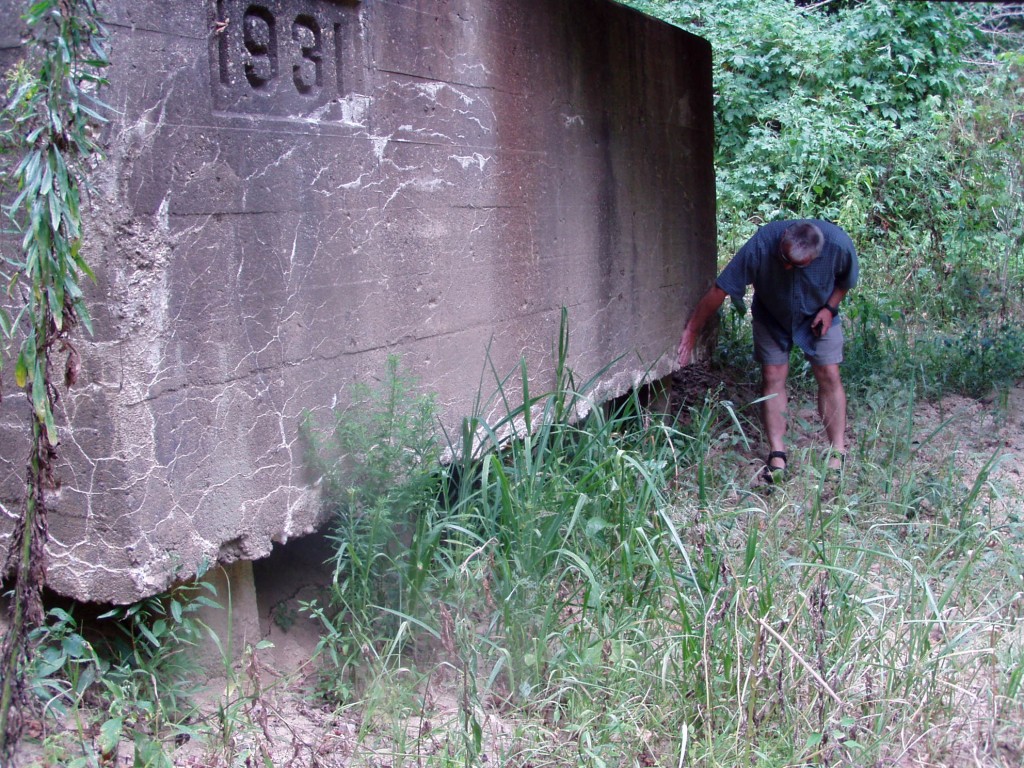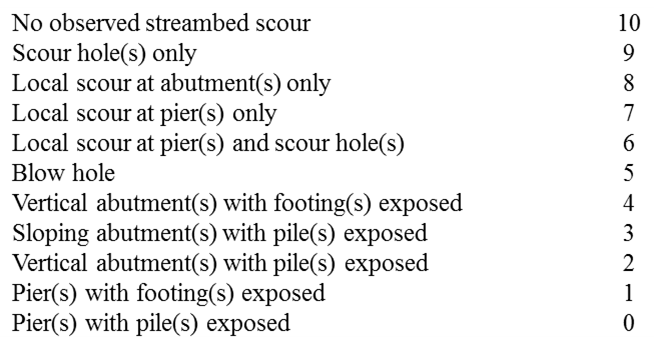In 1990, the USGS, in cooperation with the Indiana Department of Transportation (INDOT), began a project to assess streambed scour and stream-channel instability at nearly 5,600 federally funded or maintained bridges throughout Indiana. One objective of this project was to develop a screening technique to identify bridges that have existing scour problems. Today, this screening process can be used by bridge managers to aid in prioritizing their bridge maintenance plans.
The observed-streambed-scour index presented below was developed through direct conversation between personnel from the USGS and INDOT. The ordering of the observed-streambed-scour categories in this subjective index was based on INDOT’s perception of the relative severity of each observed-streambed-scour category. The index ranges from 10 to 0, with the upper end of the scale (for example, ranking values 10 and 9) indicating those bridges with lowest priority for further investigation and the lower end of the scale (for example, ranking values 5 to 0) indicating those bridges that deserve highest priority for further investigation. While the specific categories used in this index may be overly simplistic, the index provides an expeditious means of ranking bridges based on observed-streambed-scour conditions.

